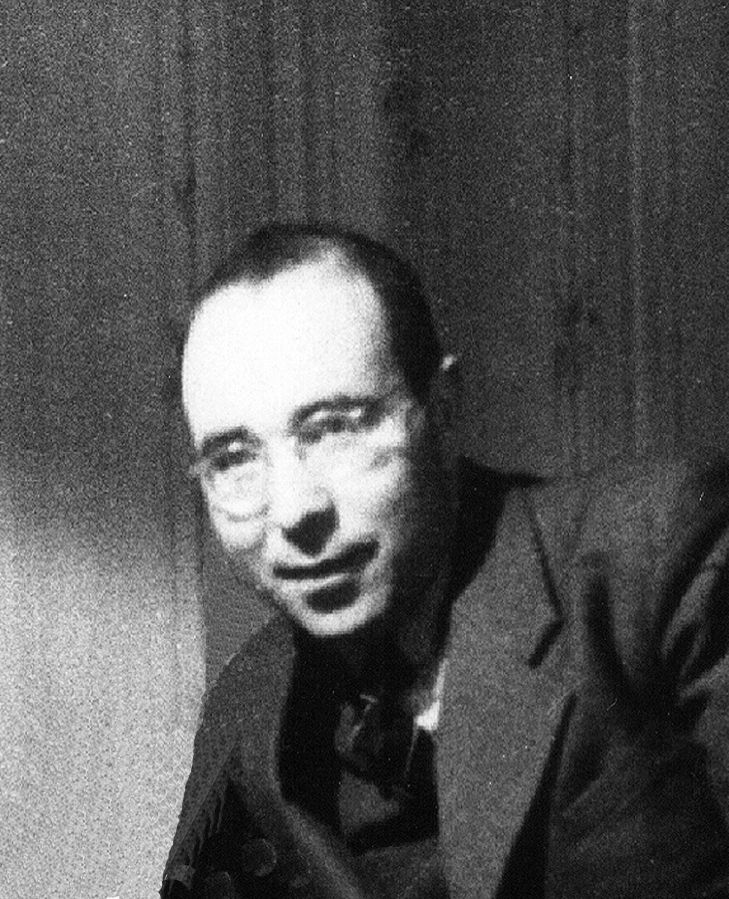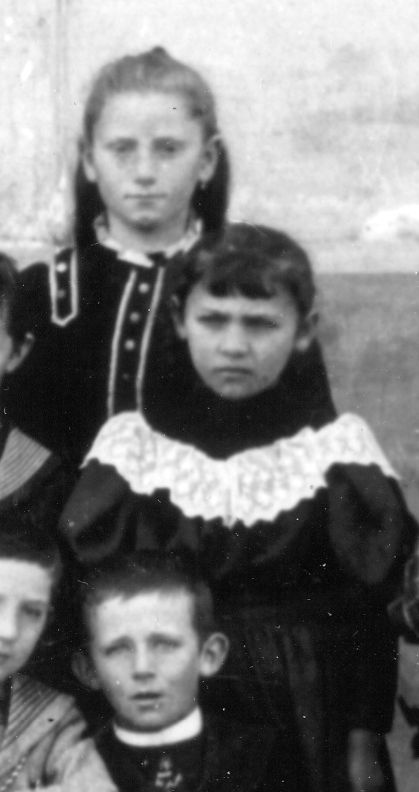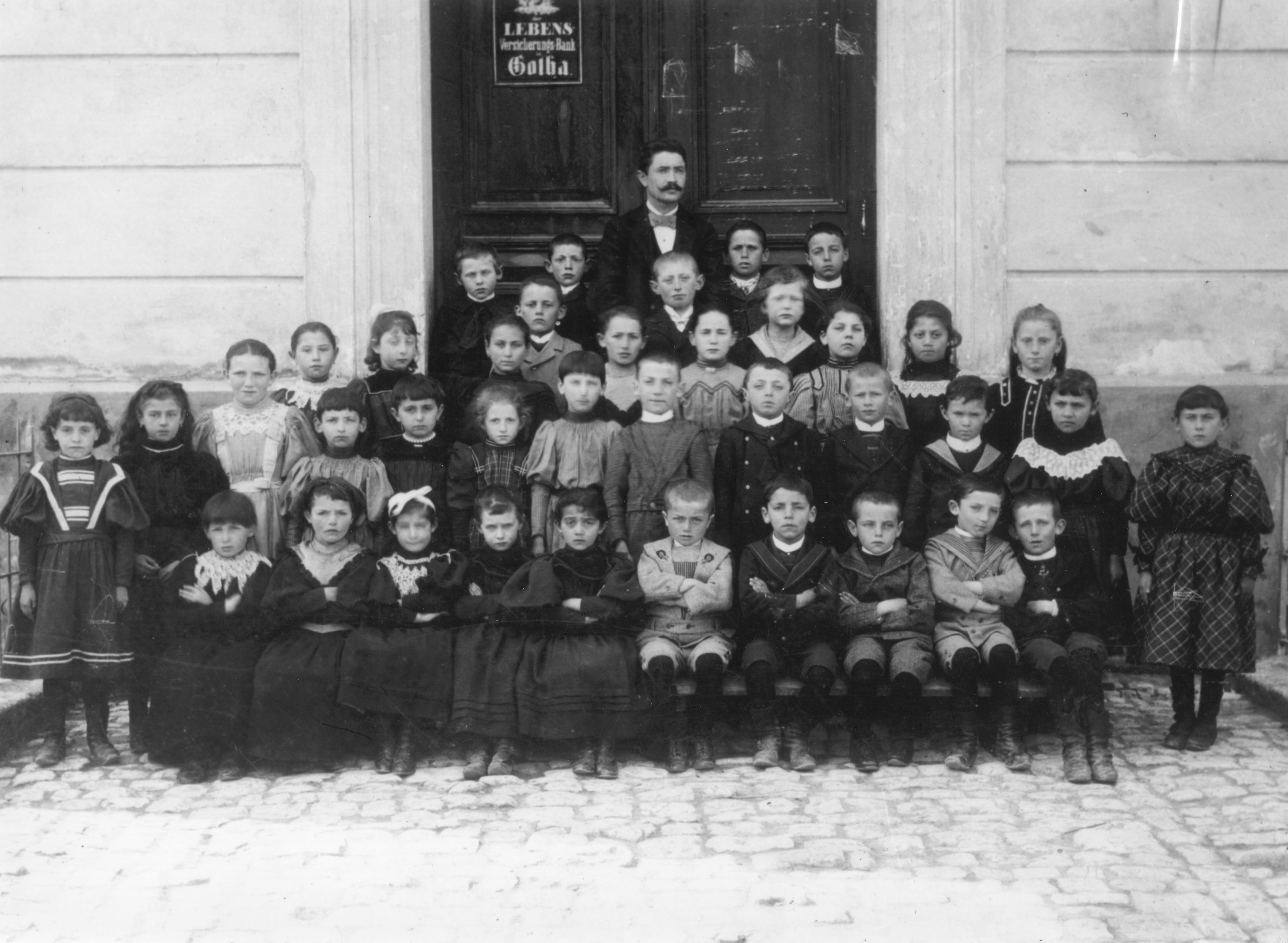The Jewish
Community
of
Laupheim
and its
Annihilation
Book Pages 159 - 161
 Hedwig
and Irma EINSTEIN, Heinz Säbel
Hedwig
and Irma EINSTEIN, Heinz Säbel
54 Ulmer Strasse

Translated
by:
Markus Ganser
KARL
NEIDLINGER
Hedwig Einstein, born
April 13, 1879 in Laupheim, single, murdered December 5,
1941 in Riga.
Irma Einstein, born
March 11, 1888 in Laupheim, single, murdered December 5,
1941 in Riga.
- Parents: Moritz (died 1890) and Pauline Einstein (died 1916).
– Siblings: Theodor, born 1873, emigrated to the USA,
Mathilde, born 1875, since 1906 married with Sigmund
Hohenemser, Haigerloch, emigrated to the USA.

„I went home … during my absence the Gestapo had performed a house search. A
camera, several films, and the minutes from various local council meetings
were missing, but the key with the capital “S” was still there. It was the
key to the synagogue. I held it in my hand as my friendly landladies, the
Einstein sisters, olev ha-sholom (translator’s note: Hebrew expression,
meaning “May they rest in peace”) told me that not a single brick was left
from the synagogue. The Jewish community had to pay for the transport of the
building rubble to the neighboring town of Biberach.
These lines originate from Heinz Saebel (1912–1986), the last teacher of the
Israelite primary school in Laupheim, who managed to emigrate to Sweden in
1939. After almost four weeks of detention in the Dachau concentration camp he
returned home in December 1938. His home was 54 Ulmer Strasse and the two
“friendly landladies” were Hedwig and Irma Einstein. This excerpt from Saebel’s
speech titled „A key that talks“, in which he describes his return from Dachau
is the only written testimony referring to the Einstein sisters who obviously
led a reclusive life. Nor is there
any story delivered by word-of-mouth about them,
and also the grocery shop once located there has long since
given way to
a
discount supermarket. Therefore, this memory book is the last
opportunity to give a face to these forgotten victims of the Shoa.

There is at least one picture of
Irma Einstein: she was in second
grade when
teacher Adolf Gideon was photographed with his pupils in 1895.
She is standing in the
second row, second from the right (as shown on picture below)
Their father
Moritz Einstein already passed away in 1890, two years after his daughter
Irma was born. He presumably was a cattle trader, because his two-floor
house on 54 Ulmer Strasse included a barn and stables. The oldest son
Theodor, born in 1873 soon migrated to the USA and the oldest daughter
Mathilde got married in Haigerloch in 1906. She managed to emigrate with her
family to the USA during the Nazi regime. The younger daughters Hedwig and
Irma remained single and it is unclear how they made their living. Probably
they kept on the cattle trade business after their father’s untimely death.
A list dated 1938 puts the sisters as “privateers”. Also in 1938 they rented
rooms in their house to the teacher Heinz Saebel and the postman
Georg Habrik.

Israelite Primary School Laupheim with
teacher Adolf Gideon, approx. 1895.
(Photo: Leo-Baeck-Institute, NY)
In 1940 or 1941 the two sisters,
like most Jewish residents who still remained in Laupheim, were confined in collective housing: The sisters were
forced to leave their large house and move to the barracks at Wendelinsgrube, a
shabby place without running water nor electricity. It is unclear if Hedwig and
Irma Einstein attempted to emigrate after this forced relocation. There was at
least a theoretical chance to obtain affidavits as their older brother and
several nephews and nieces already lived in the USA.
Starting Nov. 1,
1941, even before the two sisters were allocated to the first deportation on
Nov. 28, 1941, Laupheim officials had already rented
their home on Ulmer Strasse
to new tenants.
According to the secret state police Gestapo the first
deportation to Riga/Lettland included relatively young people who were still fit
for work. 23 citizens from Laupheim aged between 20 and 62 years were among
them. The 62 year old Hedwig Einstein was not on the list, but her younger
sister Irma was subject to this „evacuation to the East“. However, Hedwig was
allocated subsequently instead of Rosa Wallach who had fallen seriously ill. The
two sisters who stayed their whole life together were also forced to face death
together:
shortly after their arrival at the extinction camp Jungfernhof near Riga they
were murdered in a mass execution.
After the war an initial
restitution law suit was filed in 1948 by nieces from the USA (not known
by name) in which they claimed the house on 54 Ulmer Stasse “and six paintings
to be returned by the carpenter Kugler”. Obviously there were several
individuals who had taken over belongings from Hedwig and Irma Einstein. This
first request failed, but in 1950 two nephews from Provicence/USA successfully
requested the restitution of the property, and they subsequently sold the house
to the Hopfen-Steiner property administration who also owned the neighboring
buildings. In 1980 Manfred Hohenemser managed that the names of
Hedwig and Irma Einstein were included in the list of victims of the genocide at
Yad Vashem memorial.
Sources:
1. Heinz Saebel: Ein Schlüssel erzählt. Zwölfseitiger Vortrag anlässlich der 30sten Wiederkehr der Kristallnacht 1968. (A
key that talks. A 12-page speech from 1968 on the occasion of 30 years of
commemoration of the Kristallnacht.
Archive Ernst Schaell.
2. Restitution files State
archive Sigmaringen, Wü 126/2, No. 31.
3. Copies
from Yad Vashem
memorial sheets: John-Bergmann heritage, Town archive Laupheim.
4. Laupheim address book of 1938.
5. Cornelia Hecht/Antje Koehlerschmidt: Die Deportation der Juden aus Laupheim. (The
deportation of the Jews from Laupheim).
Commented
collection of documents 2003.

 Hedwig
and Irma EINSTEIN, Heinz Säbel
Hedwig
and Irma EINSTEIN, Heinz Säbel Hedwig
and Irma EINSTEIN, Heinz Säbel
Hedwig
and Irma EINSTEIN, Heinz Säbel

